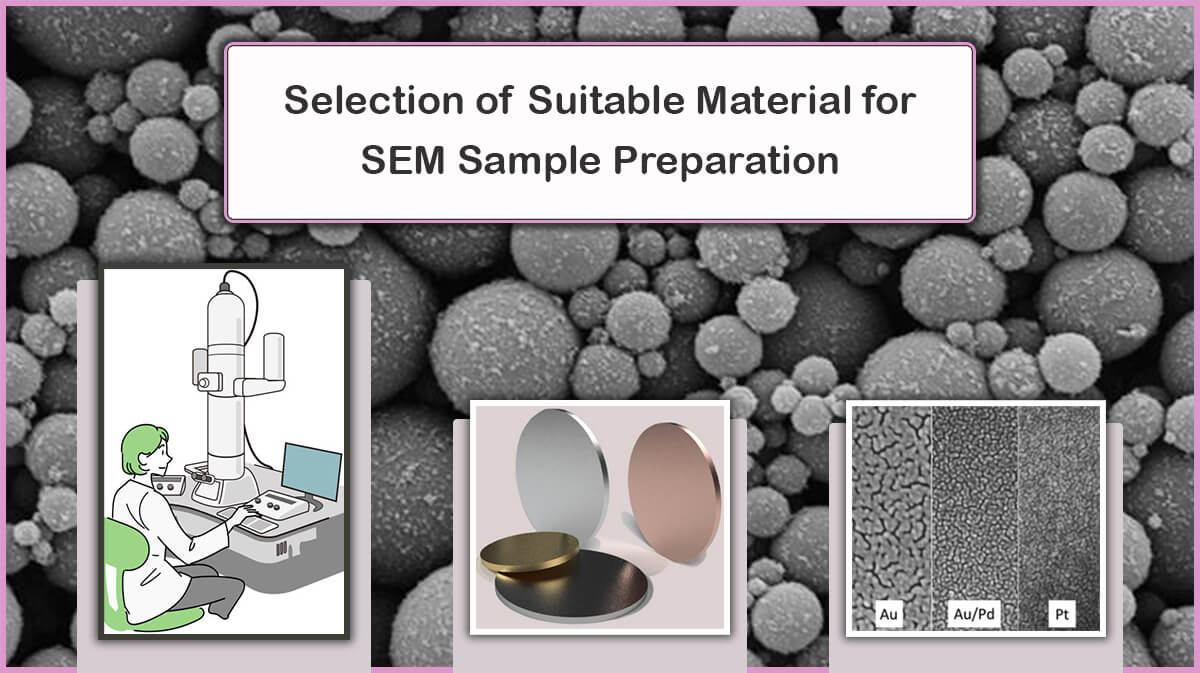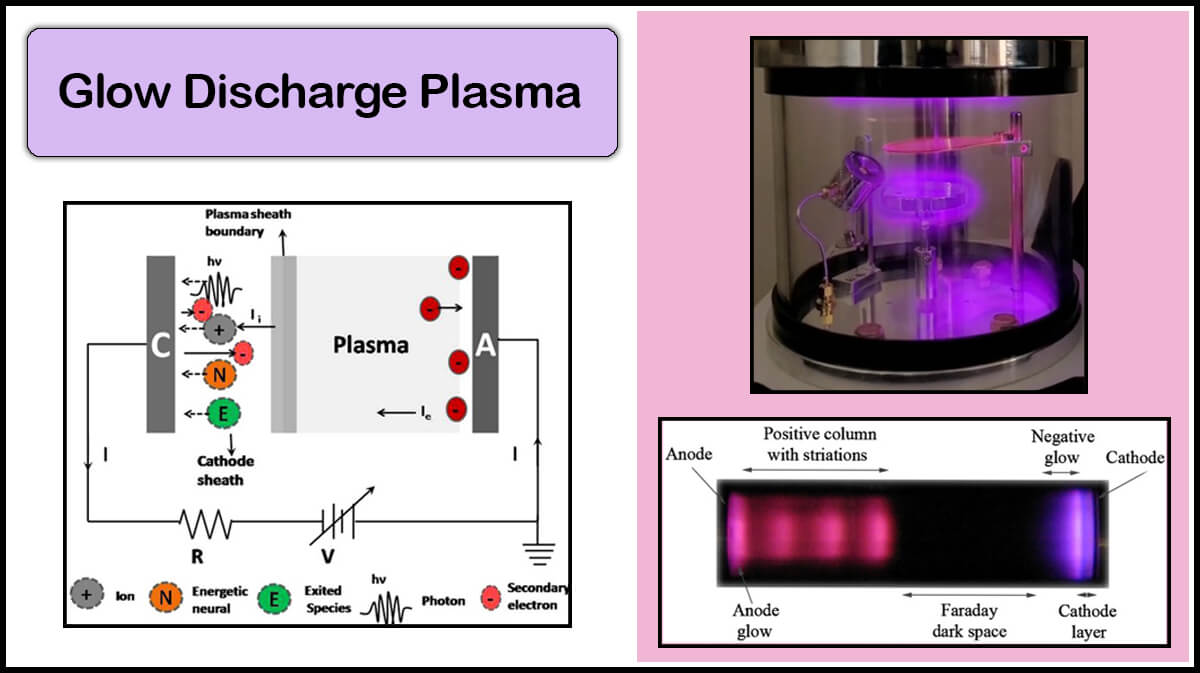
Carbon Coating for EM and EDX Sample Preparation
Carbon coating as a sample preparation step for analysis by electron microscopy and energy dispersive X-Ray spectroscopy (EDX or EDS) can significantly improve the resolution of structural and chemical analysis. Vac Coat low and high vacuum carbon coaters can provide the best carbon coat through fiber/rod carbon evaporation for research purposes.
Why Do Some Samples Need Coating Before Analysis?
Electron microscopes and analytical methods using X-rays are powerful tools that provide valuable information at the nanoscale of various samples. However, some samples, such as biological, radiation-sensitive, or poorly conductive specimens need to undergo sample preparation steps like coating with a conductive thin film, like carbon coating, to protect the sample and enhance image quality.
Turbo-Pumped Carbon Coater – DCT
DCT is a turbo-pumped carbon coater that is ideal for FE-SEM, EDS/WDS, TEM, EBSD, and thin film applications. This offers high quality uniform carbon films with fine grain sizes which are suitable for specimens that require high resolution and high quality characterization.
Sputter and Carbon Coater – DSCR
DSCR is a compact coating system included both of sputter and so carbon coater. The system is able to sputter noble metals such as gold, palladium, platinum, and gold/palladium on non-conductive/poorly conductive specimens, and so able to coat carbon film on the samples.
Sputter and Carbon Coater – DSCT
Turbo pumped sputter and carbon coater – DSCT is configured as a sputter coater and carbon coater with interchangeable heads in one instrument suitable for scanning electron microscope sample preparation.
Carbon Coating for SEM/EDX Sample Preparation: Pros and Cons
Coating a thin film of carbon on electron microscope samples has advantages like preventing heating up and charging the sample surface, however, the topography and the sample’s atomic number can be lost if a suitable material and deposition thickness are not selected for the coating.
For example for EDX analysis, the choice of coating material with the proper atomic number is of crucial importance. Hence, carbon coating is an ideal choice for the detection of non-organic substances by EDX analysis. You can read more about selection of suitable material for preparing an electron microscope sample here.

Carbon Coating Applications
- SEM Characterization – Carbon coating for SEM sample preparation is widely used as a cost-effective method. Carbon-coated samples under high vacuum conditions appear to have finer grain sizes than commonly used gold, resulting in high-resolution images. Also, a thin layer of coated carbon on fragile organic materials can help to stabilize them on the specimen stub.
- TEM Grid – TEM grids covered with the Formvar also require carbon coating to achieve the desired conductivity.
- EDX and WDS Analysis – The samples for analysis by Energy-Dispersive X-ray spectroscopy (EDX) and Wavelength-Dispersive X-Ray Spectroscopy (WDS), are preferably carbon coated, since a thin film of carbon has little effect on the x-ray yield from the sample. This is because carbon has a low atomic number and the peak of the X-ray graph of carbon does not interfere with other peaks of other elements.
- Electron Backscatter Diffraction (EBSD) – Applying a thin layer of a conductive material with a low-atomic number like carbon would not scatter the incident electron beam significantly, and would allow those electrons to reach the specimen.
Carbon Coating Methods
Carbon coating process on the sample for analysis sample preparation is performed through the evaporation of carbon sources, by heating them through electrical current or an electron beam (E-beam).
E-Beam Carbon Evaporation
E-beam carbon evaporation is used to deposit a fine layer on a limited surface as a directional process. This method is mainly used to create carbon films on TEM backup replicas.
Thermal Carbon Evaporation
Electrical current passing through carbon sources like carbon fiber or carbon rod can heat them to the evaporation temperature and evaporate them to deposit a thin layer of carbon on the sample. The thickness of the deposited film depends on the thickness of the thread used and the time that current passes through it. The carbon evaporation method is not suitable for heat-sensitive samples.
Suitable thicknesses for sample preparation for electron microscopy or X-ray analysis are between 5 and 20 nm. Vac Coat carbon coaters can be supplied with fiber or rod carbon evaporation source holders and high-current terminals on the chamber head. The carbon coating workflow can be manually or automatically controlled according to the required deposition thickness.
Carbon Sputtering
Carbon can also be sputter coated; but, the resulting films usually contain high hydrogen proportions, which makes carbon sputtering unfavorable for SEM sample preparation.
Hydrocarbon Vapor Polymerization
Carbon films can be made using glow discharge techniques, causing polymerization of a hydrocarbon vapor such as acetylene or benzene at low pressure in an evacuated chamber, however, this method does not provide a uniform coating required for practical use in electron microscopy.
Carbon Coating Operation Procedures
Carbon film can be coated through the thermal evaporation of carbon thread (fiber) or carbon rods. Carbon evaporated from the thread or rod as a result of electrical current passed through, will be deposited on the specimen. The proper layer thickness for SEM sample preparation or EDX analysis is about 5-20 nm.
Carbon Fiber Evaporation
Carbon fibers are used to make strands which are then braided into threads. The finished braided threads are thermally treated to reduce the amounts of impurities. High surface areas of carbon fibers increase the chance of contamination. The thickness of the deposited layer represented by the carbon thread depends on the thickness of the fiber. The thicker the fiber, the thicker the resulting layer, and correspondingly, the higher the required deposition current. Systems that use carbon fiber as a carbon source require an electrical current of less than 50 amps.
The carbon fiber (thread) evaporation can be performed in two modes, Flash or Pulsed. In the Flash mode, a high electrical current passes through the fiber in a limited time to evaporate it. While in the Pulsed carbon fiber (thread) evaporation, a moderately lower current passes through the thread in short pulses to evaporate it, which reduces the residual debris on the sample generally observed in the flash mode. However, in the pulsed mode, different thicknesses will be deposited by repeating each pulse due to the disappearance of the fiber strands, which is undesirable. Both modes can be executed manually or automatically in the Vac Coat carbon coaters.
Carbon Rod Evaporation
Carbon rods are normally used in a Bradley-type evaporation source with shaped carbon rods. Using carbon rods as the carbon source in the coating process, due to the small surface area of the rod, it will have less contamination than the carbon fiber coating. Thickness control is also enhanced by the use of carbon rods and by a thick carbon rod can be controlled on average between 5 and 50 nm. However, systems that use carbon rods as carbon sources require higher power (around 200 amps).
The carbon rod coating process in Vac Coat carbon coating devices can be done in the pulsed or automatic ramped modes. The ramped mode provides gradual increase in the passing current, which offers a more convenient deposition process.
Carbon Fiber or Rod, Which Fits Best?
Considering the above-mentioned differences, it is clear that carbon rod evaporation not only gives better control over the thickness but also delivers a higher-quality carbon film without contamination and debris.
However, the application of the pre-heat process to systems that are equipped with a shutter greatly reduces the contamination of the thin film deposited from the carbon fiber source. Some systems using carbon fiber have more precise control over the power supply and use thicker fiber threads; hence have better control over the thickness. However, contamination and debris are still a contingency.
Vacuum Level Needed for Carbon Coating
Carbon evaporated in low vacuum (<10-3 mbar using a rotary pump) tends to have a more crystalline structure which becomes visible at magnifications of 25,000 – 35,000x. This type of coating is sufficient for most SEM/EDX applications. Whereas carbon evaporated at higher vacuum levels (>10-5 mbar using a turbo pump and a backing pump) appears to be virtually amorphous and has a conductivity that is about 10x better than when evaporated in low vacuum. For more information on the topic, please visit our blog article.
Vac Coat Carbon Coaters
The high vacuum desk carbon coater model DCT, equipped with a turbomolecular pump, and the Desk carbon coater model DCR, equipped with a rotary pump are produced by Vac Coat Co., and suitable for deposition of the high-quality carbon film with controllable thickness.
Vac Coat also offers a large chamber high vacuum carbon coating machine DCT-300 that can be supplied with a thermal head, namely DCT-T-300, which allows coating on larger samples.
They also can be fitted with a carbon rod head to coat carbon through carbon rod evaporation. Sputter and carbon coaters, DSCR and DSCT, also provide more coating technique options within a single coating instrument. For more information about these devices, visit the Vac Coat Company website.
References
- Goldstein, Joseph I., et al. “Coating and conductivity techniques for SEM and microanalysis.” Scanning Electron Microscopy and X-Ray Microanalysis: A Text for Biologists, Materials Scientists, and Geologists (1992): 671-740. https://link.springer.com/chapter/10.1007/978-1-4613-0491-3_13
- https://blog.phenom-world.com/sputter-coating-sem
- https://www.microtonano.com/TIN-Carbon-rods-versus-carbon-fibers.php
- https://www.microtonano.com/TIN-Target-material-selection-for-coating-SEM-samples-using-an-SEM-sputter-coater.php
- https://bit.ly/2YodNoZ
- https://bit.ly/2EpyEBq
- https://www.leica-microsystems.com/fileadmin/academy/Coating3.pdf
- https://www.azom.com/article.aspx?ArticleID=22267
- https://www.jeolusa.com/RESOURCES/Sample-Preparation/Documents-Downloads/sample-preparation-techniques-conductive-coatings






















Which kind of quartz crystal sensor works properly for monitoring thickness in carbon deposition ?
Silver coated quartz crystals display better stability in thickness monitoring during carbon evaporation due to lower noise generation against thermal radiation compared to gold coated crystals. You can read more in “How does a QCM work?“.